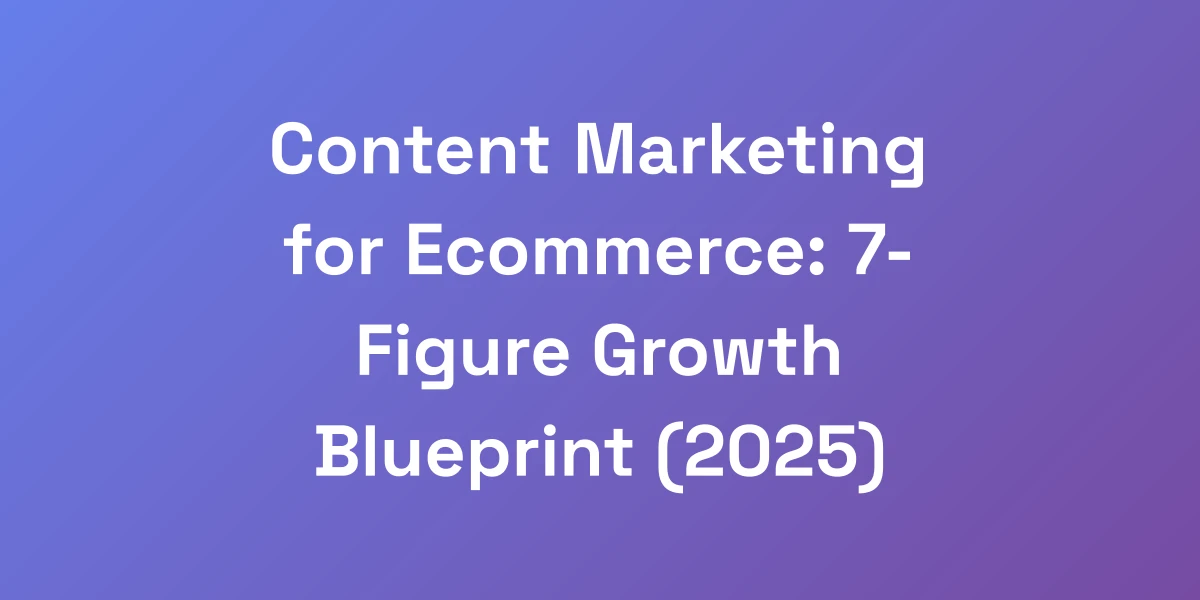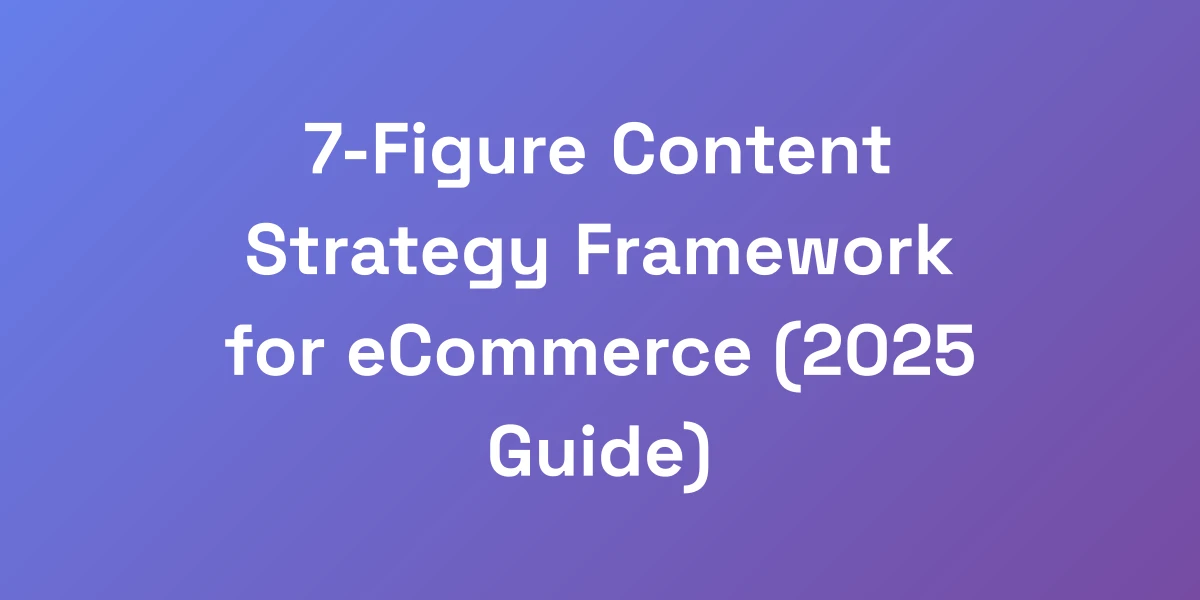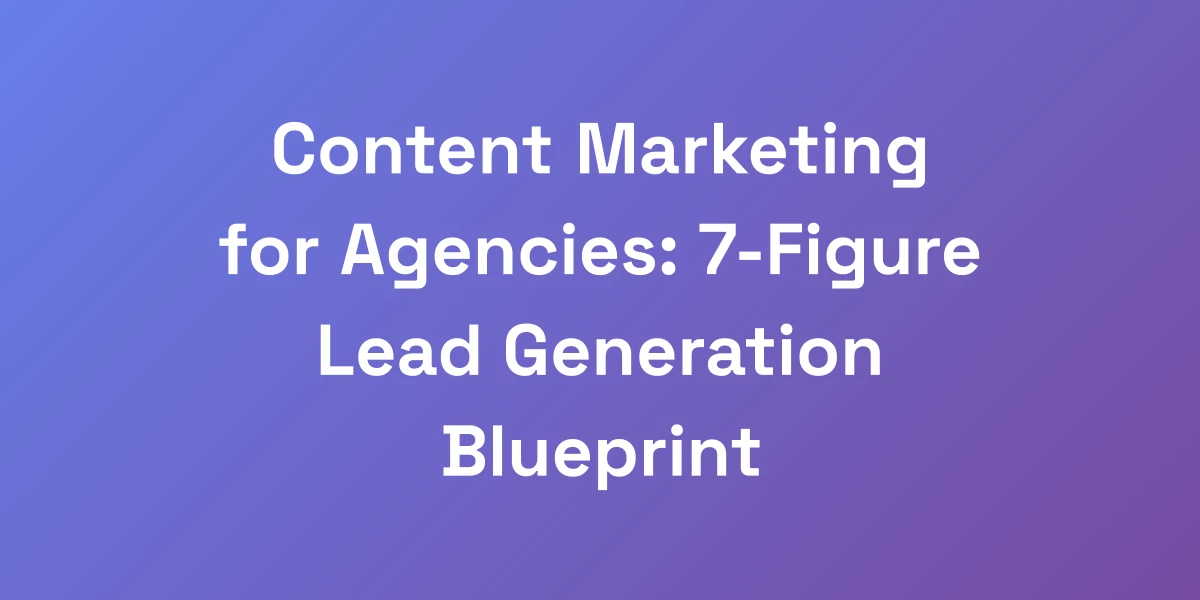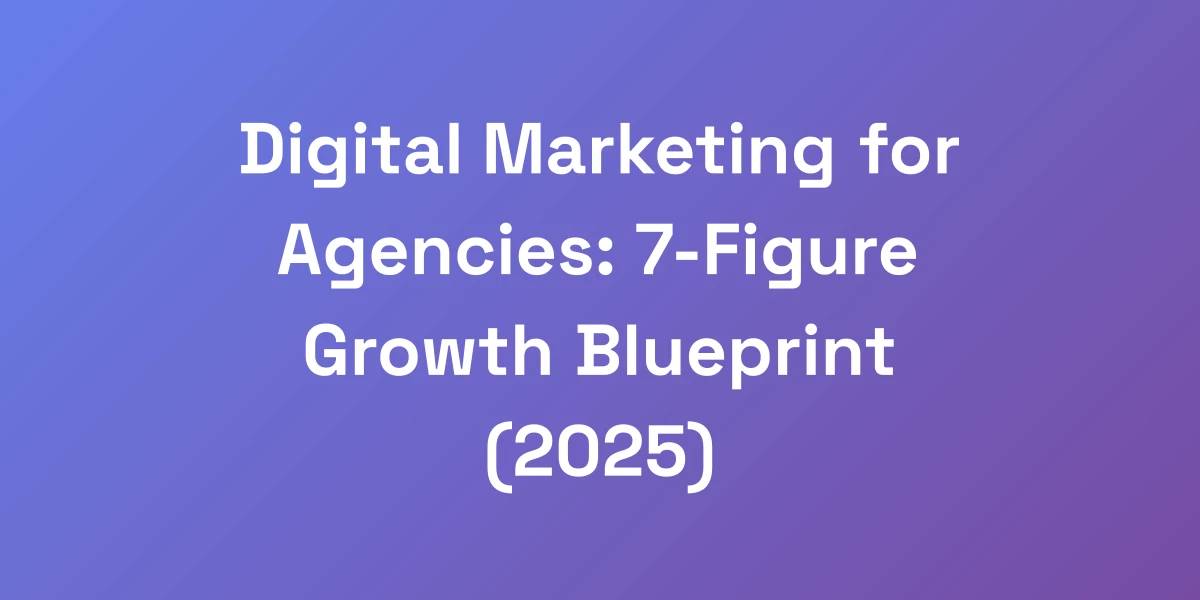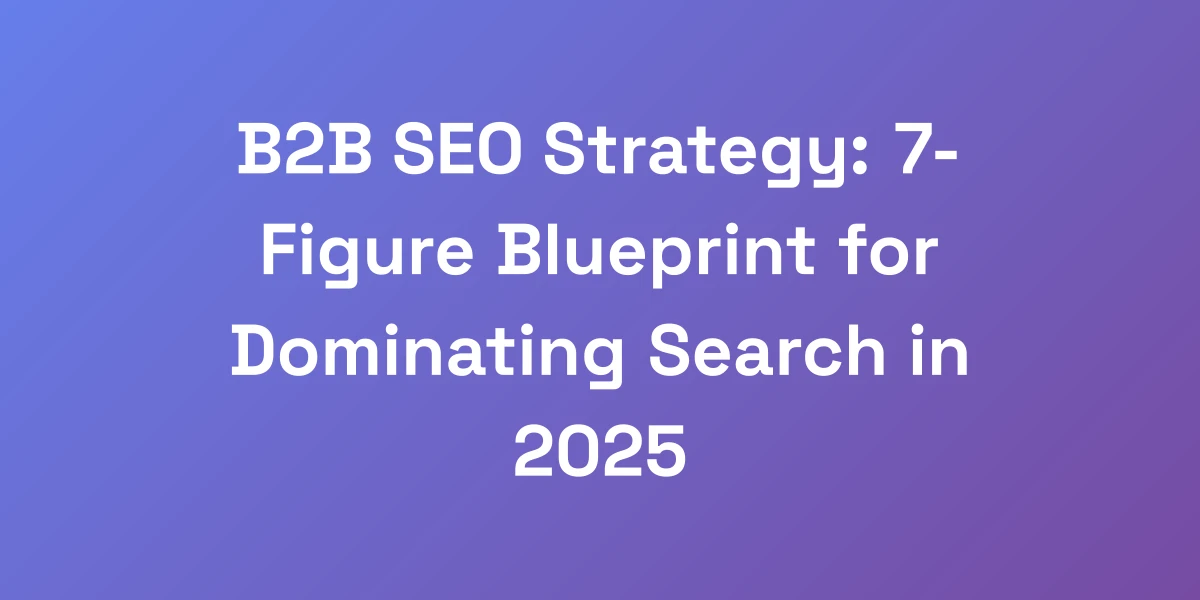
Healthcare Content Marketing: 7-Figure Strategy Blueprint for 2025
Mar 27, 2025 | By [email protected]
Let’s get one thing straight: healthcare content marketing is not just another checkbox on your marketing to-do list. It’s the lifeline that can either propel your practice to seven figures or leave you stranded in the abyss of mediocre results.
We’ve seen it time and time again – healthcare content marketing efforts that miss the mark, drowning in dry healthcare marketing statistics and corporate jargon that fail to resonate with real people. Why does this happen?
The problem is simple. Most healthcare content doesn’t speak to the actual needs and concerns of patients. It misses the emotional connection that turns casual readers into loyal patients. But here’s the kicker: you don’t have to be part of the 90% that falls flat.
Imagine having a blueprint so robust, it’s generated over $50M in revenue for our healthcare clients. Intrigued? You should be. In this guide, we’re unveiling our 7-Figure Strategy Blueprint for 2025, a game plan designed to transform your content into a powerful revenue-driving machine. Ready to revolutionize your approach? Let’s dive in.
Why Most Healthcare Content Marketing Fails (And How to Win)
Let’s cut through the BS – 90% of healthcare content marketing is garbage. It’s dry, corporate, and puts people to sleep faster than anesthesia. Here’s the truth: your patients don’t care about your awards or fancy medical terms. They care about solving their problems.
We’ve helped healthcare companies generate millions by focusing on one thing: creating content that actually helps people while building trust and authority. In this guide, I’m sharing our exact blueprint that’s generated over $50M in revenue for healthcare clients.
The $100M Mistake Most Healthcare Marketers Make
Every day, healthcare marketers make the costly mistake of treating content as merely an informative tool rather than a strategic asset. This approach can drain your budget without yielding the desired returns. The $100M mistake? Failing to align content with patient pain points.
Imagine pouring resources into a blog post filled with jargon, hoping it will educate and convert. Instead, you alienate your audience, leaving them confused and disengaged. How do we avoid this pitfall? By zeroing in on what truly matters to your patients – providing clear, actionable solutions.
- Identify Core Patient Needs: Understand the specific challenges your patients face and tailor your content to address those directly.
- Empathy-Driven Content: Use a tone that resonates emotionally, showing genuine understanding and concern.
- Actionable Solutions: Provide practical advice and steps that patients can implement immediately to solve their problems.
By shifting the focus from what you want to say to what your patients need to hear, you transform your content from forgettable to indispensable.
Understanding the New Healthcare Consumer Psychology
The landscape of healthcare consumers has drastically changed. Today’s patients are more informed, empowered, and discerning than ever before. They seek not only information but also reassurance and trust from their healthcare providers.
So, how do we tap into this new psychology? It starts with recognizing that patients are looking for a partner in their health journey, not just a service provider.
- Transparency and Authenticity: Patients value honesty and openness. Share success stories, real patient experiences, and behind-the-scenes looks at your practice.
- Personalization: Tailor content to different segments of your audience. Not all patients have the same needs.
- Community Building: Foster a sense of community through forums, social media groups, and interactive content.
By aligning your content strategy with these psychological shifts, you can build a deeper connection with your audience, fostering loyalty and trust.
Trust-Building Framework for Healthcare Content
Trust is the cornerstone of effective healthcare content marketing. Without it, your content will fall on deaf ears, no matter how well-crafted it is.
Here’s our Trust-Building Framework:
- Authority: Position your practice as a thought leader by consistently sharing expert insights and high-quality content.
- Transparency: Be open about your processes, pricing, and the benefits and risks of treatments.
- Reliability: Ensure your content is accurate, up-to-date, and medically reviewed.
- Engagement: Actively interact with your audience through comments, Q&A sessions, and personalized responses.
Implementing this framework will help establish a solid foundation of trust, making patients more likely to engage with your content and choose your services.
The Authority-First Content Approach
Authority-first doesn’t mean arrogance; it means establishing your credibility and expertise upfront. In healthcare, where trust is paramount, demonstrating authority is key to convincing patients you’re the right choice for their care.
Here’s how to adopt an authority-first approach:
- Authoritative Content: Focus on creating in-depth, well-researched content that answers your audience’s questions comprehensively.
- Credential Showcasing: Highlight your qualifications, certifications, and any awards or recognitions to build credibility.
- Guest Contributions: Collaborate with other experts in the field to co-author content, expanding your reach and authority.
By positioning yourself as a trusted authority, you not only attract more readers but also convert them into loyal patients.
Key Performance Metrics That Actually Matter
Forget vanity metrics. To truly measure the success of your healthcare content marketing, focus on metrics that drive real business outcomes.
- Conversion Rate: How many readers are turning into patients?
- Engagement Metrics: Time spent on page, comments, shares, and likes.
- Patient Acquisition Cost: How much are you spending to acquire each new patient through your content efforts?
- Return on Investment (ROI): Are your content marketing efforts generating a positive return compared to the cost?
By monitoring these key metrics, you can fine-tune your content strategy to maximize its effectiveness and ensure it’s contributing to your bottom line.
The Healthcare Content Marketing Success Formula
Stop throwing content at the wall and hoping something sticks. Your healthcare content needs a systematic approach that builds trust while driving action. We’ve developed a proven formula that combines medical authority with emotional connection.
This isn’t theory – it’s battle-tested across dozens of healthcare organizations. The key? Creating content that makes complex medical information digestible while maintaining credibility. Here’s the exact framework we use to turn medical expertise into marketing gold.
The Trust-Authority Matrix
Imagine a matrix where trust and authority intersect to form the backbone of your content strategy. This matrix ensures that every piece of content you produce is both credible and engaging.
- High Trust, High Authority: Clinical guidelines, in-depth research articles, and expert interviews.
- High Trust, Low Authority: Patient testimonials, community stories, and practical advice columns.
- Low Trust, High Authority: Academic papers and technical manuals.
- Low Trust, Low Authority: General news updates and promotional content.
Focusing on the first two quadrants will help you create content that not only establishes your authority but also builds trust with your audience, leading to higher engagement and conversion rates.
Content Types That Convert in Healthcare
Not all content types are created equal, especially in the healthcare sector. To maximize conversions, it’s essential to diversify your content portfolio.
- Blog Posts: Ideal for SEO and addressing specific patient questions.
- Videos: Highly engaging and perfect for explaining complex procedures or treatments.
- Infographics: Great for visual learners and simplifying data-driven content.
- Webinars and Live Q&A Sessions: Foster real-time engagement and build authority.
- E-books and Whitepapers: Offer in-depth information for those looking to dive deeper.
By leveraging a mix of these content types, you can cater to different preferences and increase the likelihood of converting readers into patients.
Psychology-Based Content Architecture
Understanding the psychology behind how people consume and process information can significantly enhance the effectiveness of your content.
Here’s our approach:
- Emotional Triggers: Use storytelling to tap into emotions, making your content more relatable and memorable.
- Consistency: Maintain a consistent voice and
tone to build familiarity and trust over time.
- Clarity and Simplicity: Break down complex medical information into easy-to-understand language.
- Call to Action (CTA): Strategically place CTAs that encourage readers to take the next step, whether it’s scheduling an appointment or downloading a resource.
By aligning your content architecture with these psychological principles, you can create a more engaging and persuasive experience for your audience.
Compliance-First Content Development
In healthcare, compliance isn’t optional—it’s mandatory. Developing content that adheres to regulations like HIPAA ensures you’re not only compliant but also safeguarding patient trust.
- HIPAA Compliance: Avoid sharing any protected health information (PHI) without explicit consent.
- Medical Review: Ensure all content is reviewed by qualified medical professionals before publication.
- Transparency: Clearly disclose any affiliations, sponsorships, or endorsements to maintain credibility.
- Accessibility: Make your content accessible to all, including those with disabilities, by following ADA guidelines.
By prioritizing compliance, you not only avoid legal pitfalls but also strengthen your reputation as a trustworthy and reliable healthcare provider.
ROI Measurement Framework
Understanding the return on investment (ROI) of your content marketing efforts is crucial for refining your strategy and proving its value to stakeholders.
- Set Clear Objectives: Define what success looks like—be it increased patient inquiries, higher website traffic, or improved conversion rates.
- Track Relevant Metrics: Focus on metrics like conversion rates, engagement, ROI, and patient acquisition costs.
- Use Analytics Tools: Leverage tools like Google Analytics, SEMrush, and specialized healthcare marketing platforms to gather data.
- Regular Reporting: Create regular reports to assess performance, identify trends, and make informed decisions.
With a robust ROI measurement framework, you can continuously optimize your content marketing efforts to ensure they contribute effectively to your business goals. Small businesses can also benefit from [content marketing for small businesses](https://autoseo.io/blog/content-marketing-for-small-businesses/) , ensuring you leverage your content effectively to maximize ROI.
Building Your Healthcare Content Engine
Most healthcare organizations treat content like a side project. Big mistake. In today’s digital world, your content IS your brand. We need to build a systematic content engine that consistently delivers value while scaling efficiently.
This isn’t about hiring more writers – it’s about creating systems and processes that multiply your impact, such as leveraging AI-powered autoblogging. I’ll show you how to build a content machine that generates leads while you sleep, using our proven Content Multiplication Method™.
Content Team Structure and Roles
A well-structured content team is essential for maintaining quality and consistency. Here’s how to set yours up:
- Content Strategist: Oversees the entire content strategy, ensuring alignment with business goals.
- Medical Writers: Create accurate and authoritative content, either in-house or through partnerships with medical professionals.
- SEO Specialist: Optimizes content for search engines, ensuring it reaches your target audience.
- Editors and Fact-Checkers: Ensure content accuracy, compliance, and readability.
- Content Distribution Manager: Manages the distribution of content across various channels to maximize reach and engagement.
By clearly defining roles and responsibilities, you create a streamlined workflow that enhances efficiency and content quality.
Content Calendar and Planning Systems
Planning is key to maintaining a consistent content flow. Here’s how to set up your content calendar:
- Monthly Themes: Align content with monthly healthcare themes or awareness days to stay relevant.
- Weekly Content Slots: Allocate specific days for different content types, such as blog posts, videos, and social media updates.
- Editorial Meetings: Conduct regular meetings to brainstorm ideas, review progress, and adjust strategies as needed.
- Content Management Tools: Use tools like Trello, Asana, or CoSchedule to organize and track your content pipeline.
A well-organized content calendar ensures you’re consistently delivering valuable content, keeping your audience engaged and informed.
Quality Control and Compliance Processes
Consistently high-quality content is non-negotiable in healthcare. Here’s how to maintain it:
- Standard Operating Procedures (SOPs):strong> Develop SOPs for content creation, review, and approval processes.
- Medical Reviews: Ensure all content is reviewed by medical professionals before publication.
- Compliance Audits: Regularly audit your content to ensure it meets HIPAA and other regulatory standards.
- Feedback Loops: Implement feedback mechanisms to continuously improve content quality based on team and audience input.
By instituting rigorous quality control and compliance processes, you safeguard the integrity of your content and build lasting trust with your audience.
Content Distribution Channels
Creating great content is only half the battle. You need to distribute it effectively to reach your audience. Here are the primary channels to focus on:
- Website and Blog: Your primary hub for all content. Ensure it’s optimized for SEO and user experience.
- Email Marketing: Nurture leads and keep your audience engaged with regular newsletters and updates.
- Social Media: Share content on platforms like Facebook, Instagram, LinkedIn, and Twitter to reach a broader audience.
- Video Platforms: Utilize YouTube and Vimeo to host and share video content.
- Webinars and Live Streams: Engage with your audience in real-time through interactive sessions.
By strategically leveraging these distribution channels, you can amplify your content’s reach and drive meaningful engagement.
Analytics and Optimization Framework
To keep your content engine running smoothly, you need a robust analytics and optimization framework:
- Performance Tracking: Monitor key metrics like traffic, engagement, conversion rates, and ROI.
- A/B Testing: Experiment with different content formats, headlines, and CTAs to see what resonates best with your audience.
- Feedback Collection: Gather feedback from your audience to understand their preferences and pain points.
- Continuous Improvement: Use data-driven insights to refine your content strategy, ensuring it remains effective and aligned with your goals.
By continuously monitoring and optimizing your content, you ensure it remains relevant, engaging, and effective in driving results.
Advanced Healthcare Content Optimization Tactics
Basic SEO doesn’t cut it anymore in healthcare. You need advanced optimization strategies that account for Google’s health-specific algorithms while maintaining medical accuracy. We’ve cracked the code on creating content that ranks AND converts.
The secret? Understanding how to blend medical expertise with search engine psychology. Here’s our exact process for creating content that dominates healthcare SERPs while building unshakeable authority.
Healthcare-Specific SEO Strategies
SEO for healthcare requires a specialized approach to navigate the unique challenges and opportunities of the industry.
- Keyword Research: Focus on long-tail and question-based keywords that reflect patient search intent.
- On-Page SEO: Optimize meta tags, headers, and content with relevant healthcare keywords without sacrificing readability.
- Technical SEO: Ensure your website is mobile-friendly, has fast load times, and uses secure HTTPS protocols.
- Local SEO: Optimize for local search terms to attract patients in your geographic area.
By implementing these strategies, you can improve your visibility in search results and drive more targeted traffic to your website. Additionally, utilizing [auto SEO tools](https://autoseo.io/blog/auto-seo-tools/) can further enhance your optimization efforts.
Featured Snippet Optimization
Featured snippets can significantly boost your content’s visibility and authority. Here’s how to optimize for them:
- Answer Questions Directly: Structure your content to directly answer common patient questions with clear, concise responses.
- Use Structured Data: Implement schema markup to help search engines understand your content better.
- Optimize for Voice Search: With the rise of voice assistants, ensure your content is conversational and easily accessible in spoken queries.
- Enhance Readability: Use bullet points, numbered lists, and short paragraphs to make it easier for search engines to extract information.
By targeting featured snippets, you can capture prime real estate in search results, driving more organic traffic to your site.
Medical Entity Optimization
In the realm of healthcare, entities like medical terms, conditions, and treatments play a crucial role in content optimization.
- Entity Recognition: Identify and utilize key medical entities relevant to your content to enhance relevance and authority.
- Semantic Search: Use related terms and synonyms to cover a broader range of search queries and improve content comprehensiveness.
- Knowledge Graph Integration: Ensure your content is aligned with Google’s Knowledge Graph by providing clear, structured information about medical entities.
Optimizing for medical entities not only boosts your SEO but also ensures your content is accurately interpreted by search engines, enhancing its credibility and reach.
User Intent Mapping
Understanding and mapping user intent is essential for creating content that meets the needs of your audience.
- Informational Intent: Create content that educates and informs, such as blog posts, how-to guides, and explainer videos.
- Navigational Intent: Optimize content that helps users navigate to specific areas of your website, like service pages and appointment booking.
- Transactional Intent: Develop content that drives conversions, such as promotional offers, patient testimonials, and case studies.
By aligning your content with user intent, you ensure it meets the specific needs of your audience, increasing engagement and conversions.
Content Performance Analysis
To stay ahead, you need to consistently analyze and refine your content performance. Here’s how:
- Regular Audits: Conduct periodic content audits to assess performance, identify gaps, and uncover opportunities for improvement.
- Performance Dashboards: Use dashboards to monitor key metrics in real-time, enabling quick adjustments to your strategy.
- Competitive Analysis: Keep an eye on competitors to understand what’s working for them and how you can differentiate your content.
- Feedback Loops: Incorporate feedback from your audience to make data-driven improvements to your content.
By continuously analyzing your content performance, you can make informed decisions that enhance your strategy and drive better results.
Scaling Your Healthcare Content ROI
Let’s talk numbers. If you’re not generating at least 3x ROI on your content investment, you’re doing it wrong. We’ve developed a systematic approach to scaling healthcare content that consistently delivers results.
This isn’t about creating more content – it’s about creating smarter content that works harder for you. I’m going to show you exactly how to turn your content into a profit center, not a cost center.
Content ROI Calculation Framework
To effectively scale your content marketing efforts, you need a solid framework for calculating ROI.
- Identify Costs: Include all content creation, distribution, and maintenance costs.
- Measure Revenue: Track the revenue generated directly from your content through conversions and patient inquiries.
- Calculate ROI: Use the formula (Revenue – Cost) / Cost to determine your ROI.
This framework allows you to assess the financial impact of your content efforts accurately, ensuring you invest in the strategies that deliver the best returns.
Scaling Systems and Processes
To scale your content marketing, you need efficient systems and processes that support growth without compromising quality.
- Automation Tools: Use [marketing automation for agencies](https://autoseo.io/blog/marketing-automation-for-agencies/) to streamline content distribution, email marketing, and social media posting.
- Standardized Workflows: Implement standardized workflows for content creation, review, and approval to maintain consistency.
- Outsourcing: Consider outsourcing non-core tasks to focus your in-house team on strategic initiatives.
- Training and Development: Continuously train your team to keep up with the latest content marketing trends and best practices.
By establishing scalable systems and processes, you can handle increased content demands efficiently, driving growth and maximizing ROI.
Automation and AI Integration
Integrating automation and AI into your content strategy can significantly enhance efficiency and effectiveness.
- Content Generation: Use AI tools like ChatGPT to generate content drafts, freeing up your team to focus on high-level strategy and editing.
- Personalization: Leverage AI to deliver personalized content experiences based on user behavior and preferences.
- SEO Optimization: Utilize AI-driven SEO tools to optimize content for search engines dynamically. Learn more in The Ultimate Guide to SEO Optimization Automation in 2025.
- Analytics and Insights: Implement AI-powered analytics to gain deeper insights into content performance and audience behavior.
By embracing automation and AI, you can streamline your content marketing efforts, reduce costs, and drive more impactful results.
Content Repurposing Strategy
Maximize the value of your content by repurposing it across different formats and channels.
- Transform Blog Posts into Videos: Convert in-depth articles into engaging videos for platforms like YouTube and social media.
- Create Infographics: Turn data-heavy content into visually appealing infographics that are easy to share.
- Develop E-books: Compile a series of related blog posts into a comprehensive e-book for lead generation.
- Leverage Webinars: Use existing content as the foundation for webinar topics, providing live, interactive experiences for your audience.
Repurposing content not only extends its lifespan but also increases its reach and impact, ensuring you get the most out of every piece you create.
Performance Optimization Loop
Continuous improvement is key to sustained success in content marketing. Implement a performance optimization loop to keep refining your strategy.
- Analyze Performance: Regularly review your content performance data to identify what’s working and what’s not.
- Implement Changes: Make necessary adjustments based on your analysis, whether it’s tweaking your SEO strategy or altering your content format.
- Test and Iterate: Continuously test new ideas and iterate based on the results to keep your strategy fresh and effective.
- Stay Updated: Keep up with the latest content marketing trends and Google algorithm updates to ensure your content remains relevant.
By fostering a culture of continuous improvement, you can ensure your content marketing strategy remains agile and effective, driving sustained growth and ROI.
Conclusion
Let’s recap. Healthcare content marketing is a powerful tool that, when executed correctly, can drive substantial revenue and establish your practice as a trusted authority. By avoiding common pitfalls, understanding your audience’s psychology, and implementing a structured, strategic approach, you can turn your content into a seven-figure revenue generator.
Remember, it’s not about creating more content but creating the right content that resonates with your audience and meets their needs. Use our 7-Figure Strategy Blueprint for 2025 to guide your efforts and watch your healthcare business thrive.
Ready to take your healthcare content marketing to the next level? Start implementing these strategies today and see the transformative impact on your practice.
We’d love to hear about your experiences and successes. Share your thoughts in the comments below or reach out to us directly – let’s build a thriving healthcare community together.

